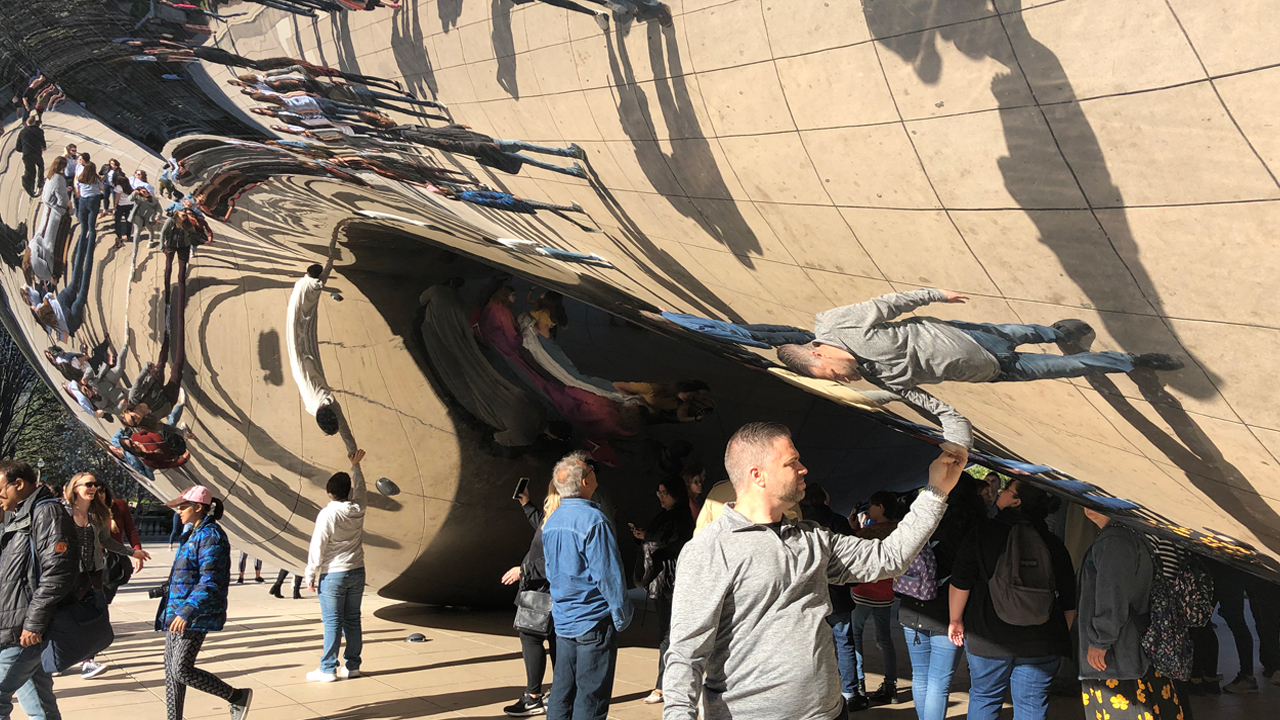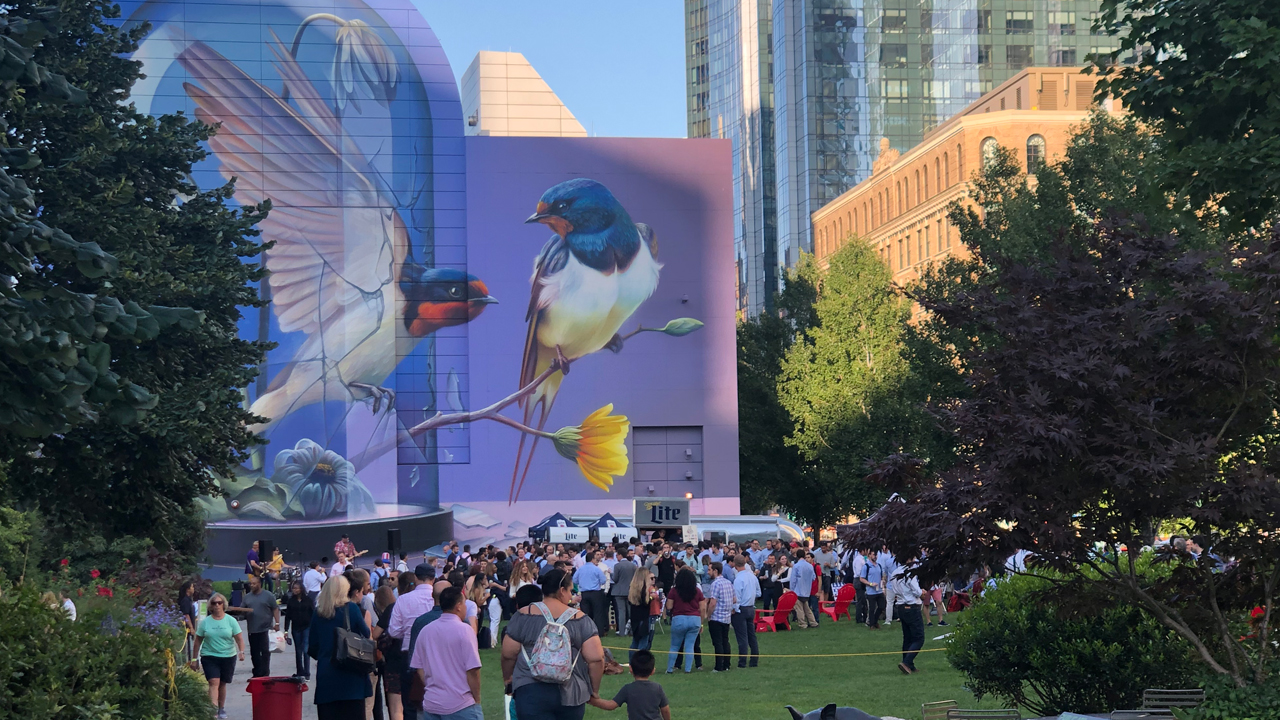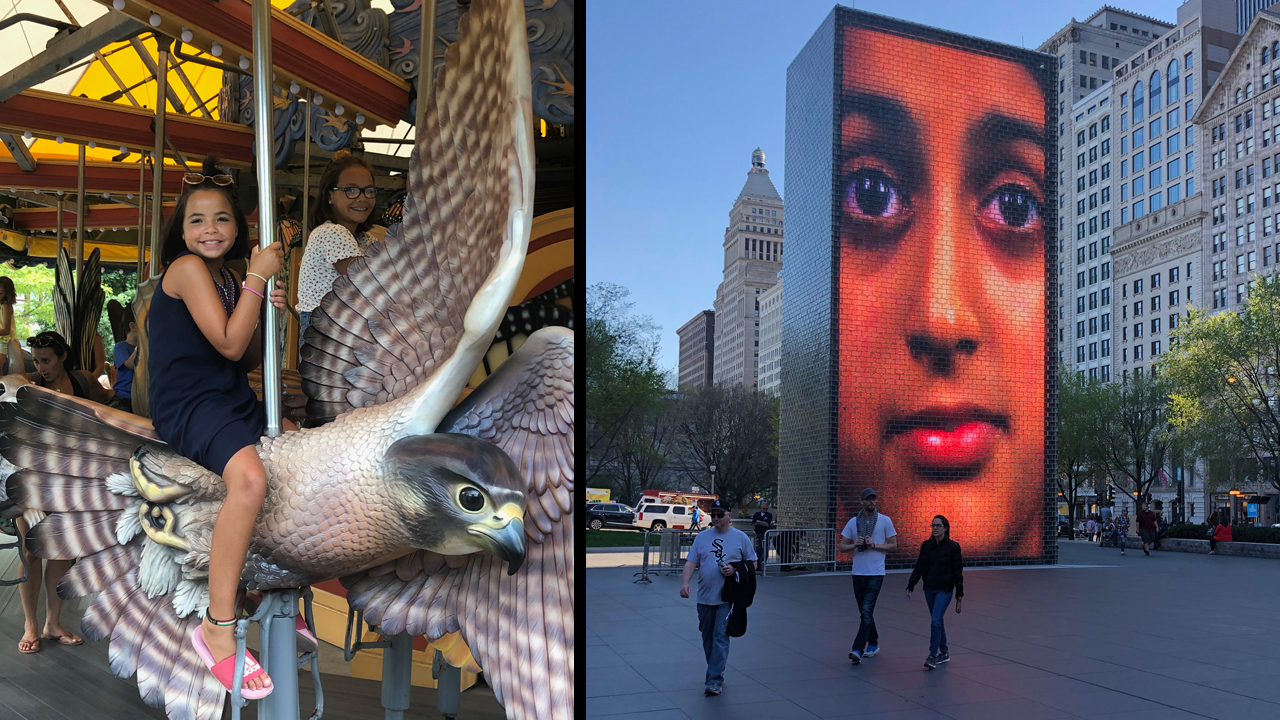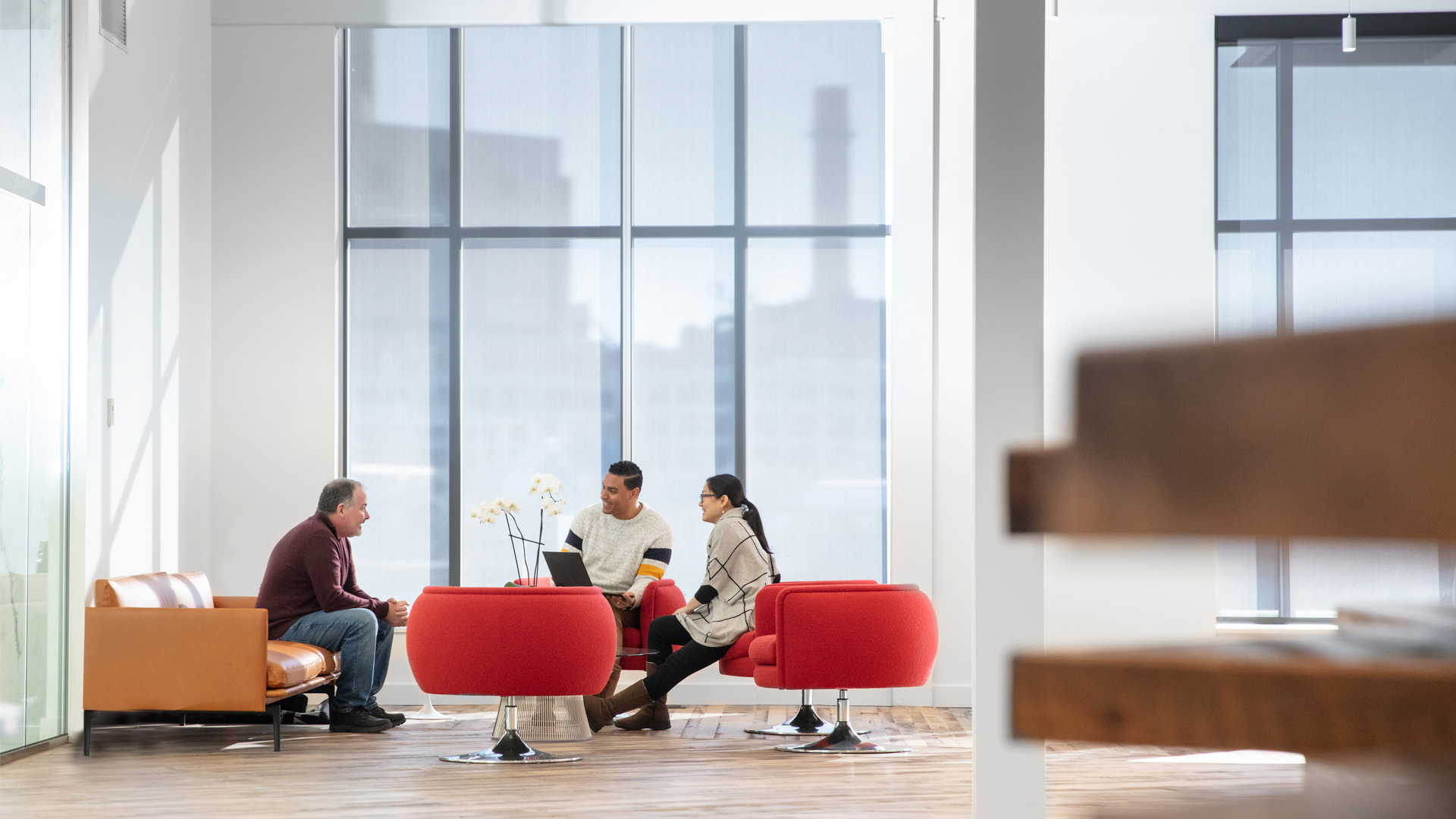Leila Mitchell was invited to serve as a panelist for Bisnow’s Boston Placemaking Summit on August 28th, where a group of real estate professionals came together to discuss the ways neighborhoods are developed through entertainment, retail, and authentic experience. As the only designer on the panel, Leila’s focus was on the theoretical concept of Placemaking and how we can better achieve authenticity through a process of engagement, connectivity, and beauty. The event provided a great forum for discussion, with panelists answering a range of thought-provoking questions about placemaking and authenticity. We’ve shared below some of Leila’s reflections and thoughts from the summit.
Recently I had the opportunity to reflect on my continued examination of the human experience within place. This investigation began in my childhood when I planned and organized neighborhood events, took form in undergrad architecture school where one of my favorite books was The Experience of Place by Tony Hiss, and matured in grad school where my Thesis was titled “Experience of Place: An investigation of a digital soundscape”. Suffice it to say, I am interested in shaping my understanding of experience and how I can design an effective place. One that connects, inspires, and endures.
What is “placemaking” and how do we make it authentic?
Throughout my practice and academic pursuits, I have explored how humans move through space, both physical and non-physical. It is this magical element: human awareness, that makes the space a place and brings meaning to this void. As “placemakers” we have an obligation to understand what place, experience and, another term we strive for, authenticity mean in the context of our environment.
On Space and Place
Humans influence space through the architectural design of its form. The form, which acts as a container of space, provides certain characteristics that determine an identifiable place with which we develop associations. As we connect to this place, we finding meaning, purpose, and intention.
On Experience
We cannot create someone’s experience. Experience is personal. It is internal. It is a result of a multitude of sensory, memory, and performance inputs over a timespan. Tony Hiss refers to the experience of place as “drinking in” our surroundings with a sixth sense or “Simultaneous Perception.” This expands beyond just our understanding of the physical space attributes and into an intellectual discovery of our identity within this space and connection to the community around us. Experience is conceived by the user. Therefore, as makers of place, we first need to appreciate who the place is for and what is important to them.
Things aren’t beautiful because the way that they look.
Things are beautiful because of what they mean.
On Authenticity
When we integrate this thoughtful and relevant thread throughout our design process, this place is authentic. Its connection to the users and community is built on intention that is real and meaningful. And more importantly, has sustainability.
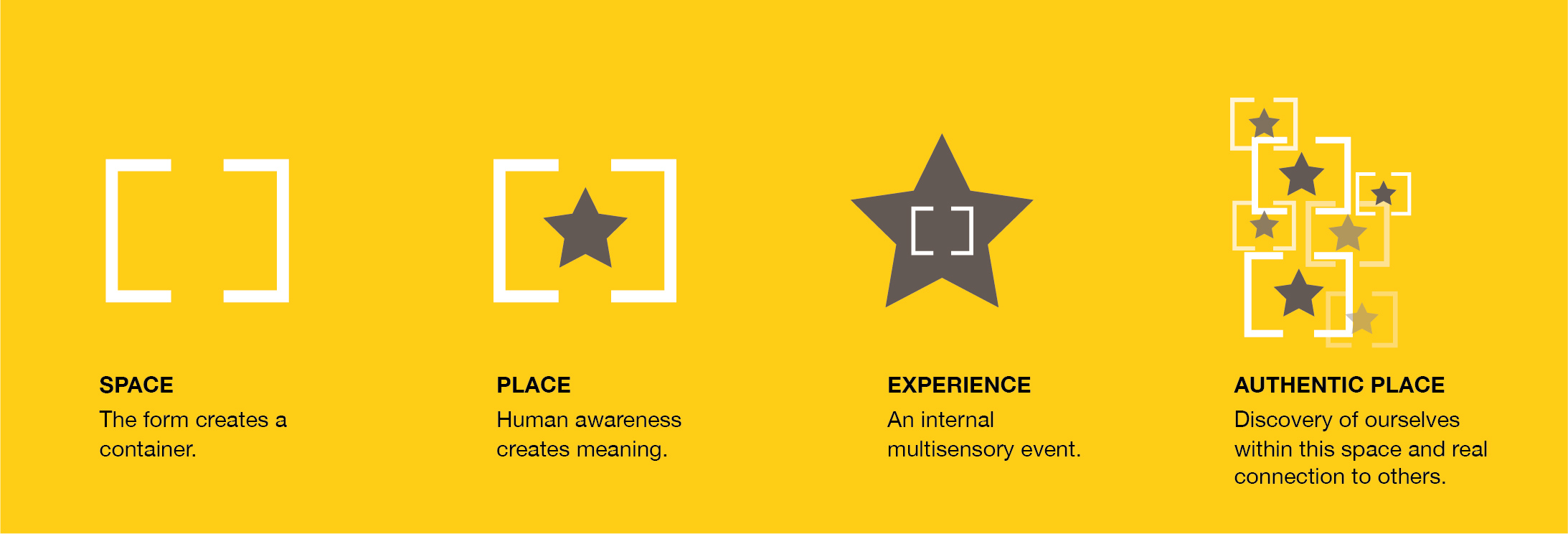
How do you address a diversity of people, ages, interests? Is there a formula for the perfect place?
Great places are dimensional. Not just in their physical qualities, but also in their user profiles. Our experience on this earth is complex and rich with variety. Why would we attempt to create an authentic place that is one dimensional (or for one audience type) and expect it to have meaning in our society? As they say, “variety is the spice of life.” Responding to multi-generational perspectives, multi-cultural lenses, and multi-sensory applications declares that this place is for the many, not the few. This place provides connection, collaboration, innovation, inclusion, access…all those buzz words that we marketers throw around actually can be achieved.
The 3D Matrix
But how? Is there a checklist out there that if each box is filled, we’ve conceived an idyllic place? The quick answer is No. I can’t provide you with a downloadable “How to Be a Placemaker” pdf with a formula of elements. However, very much like how we at LLM Design approach any project, I am proposing to use multimodal design thinking. Following this process within a framework will introduce, test, and develop unique ideas. Solutions will surface that respond to the individual as well as the group, the micro to macro and everything in-between. With every step, solutions are measured against the main goal: Is this a meaningful place?
Imagine setting up a matrix that has three dimensions or rays. Each ray holds specific factors that are unique and are intended for that place:
- Value Indicators. What does this place represent and believe in? What are its core pillars? (engagement, social, identity, diversity, access, beauty, etc.)
- User Types/Interests. Who are your main user types? What are they interested in? How can they lead a better life? (ages, families, singles, employees, residents, multicultural, different departments…healthy, family, convenience, community, collaboration, etc.)
- Space types. What type of programmatic spaces are in this place? (retail, entertainment, work, play, residential, indoor, outdoor, on-line/digital, etc.)
As you move through the matrix, the connections provide the questions. How might you engage families in the public outdoor area? Are there opportunities for employees valuing health and well-being to engage in fitness programs? Working through the dimensional touch points delivers a truly complex and integrated formula that is right and authentic for that place.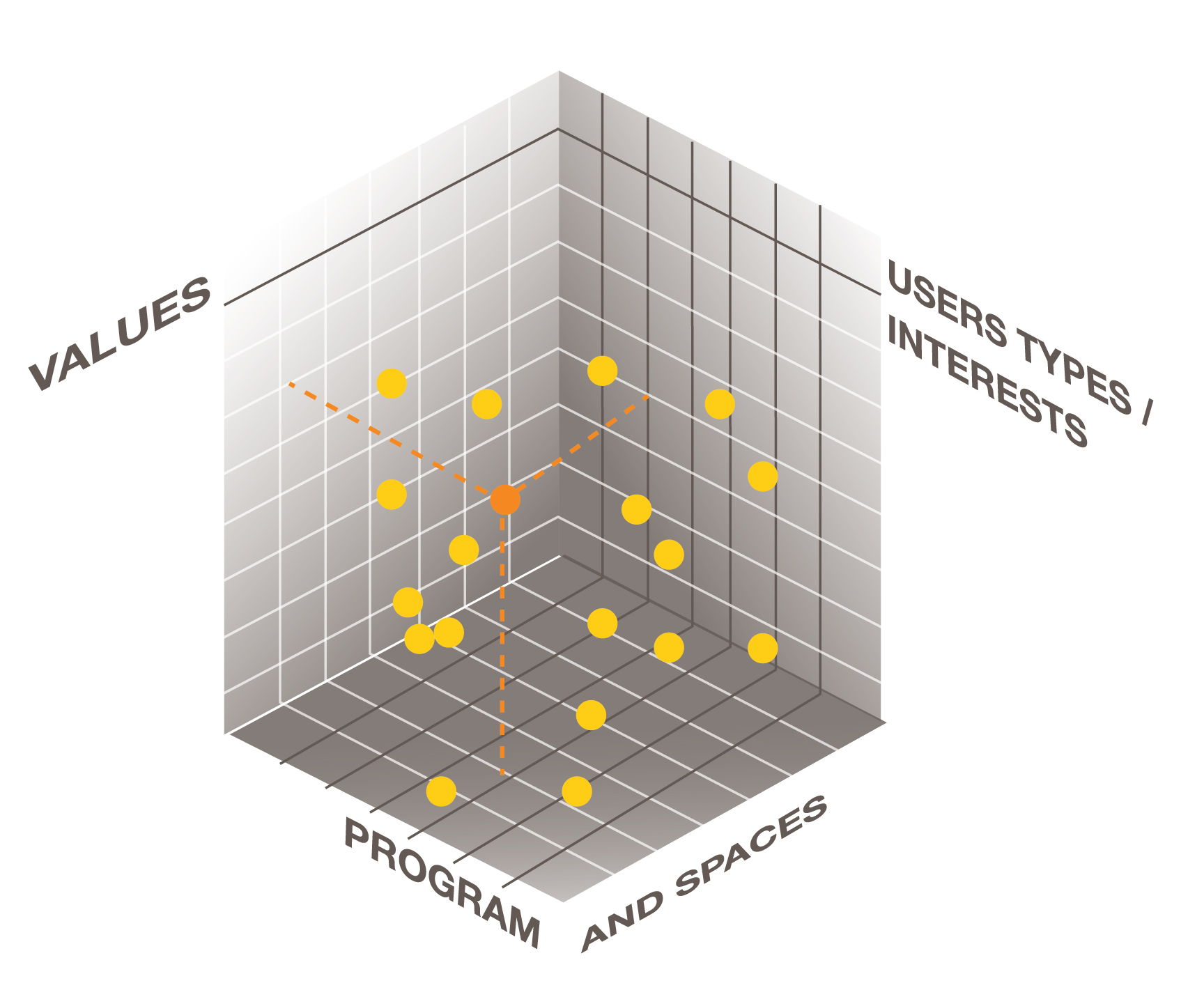
Space, both actually and virtually, creates a medium for communication, navigation, and inspiration. Through thoughtful design of our environment we can consciously change our experience of place for the better
These are just a few examples of successful place with activities, programming, and spaces that respond to a variety of user experiences.

